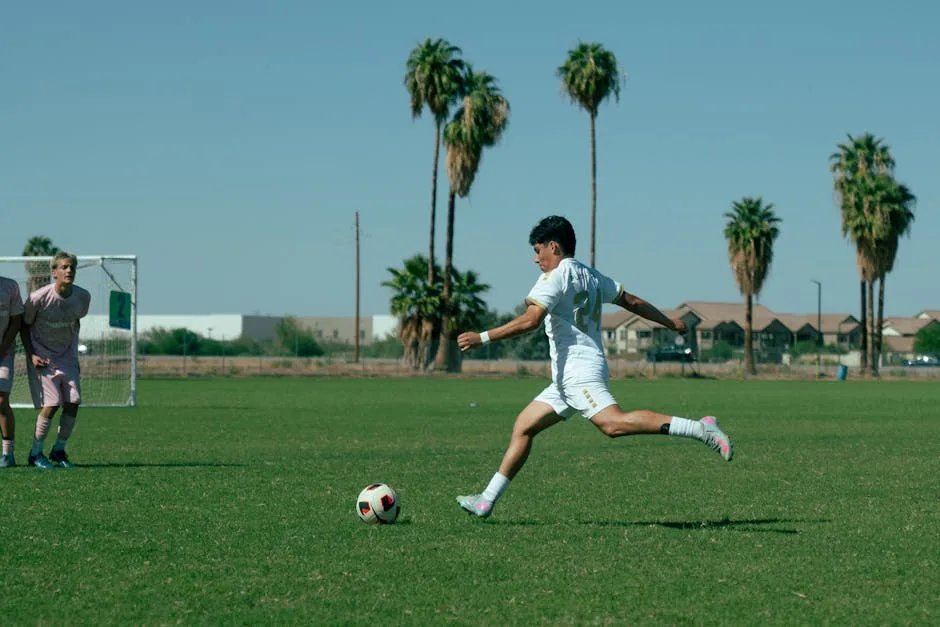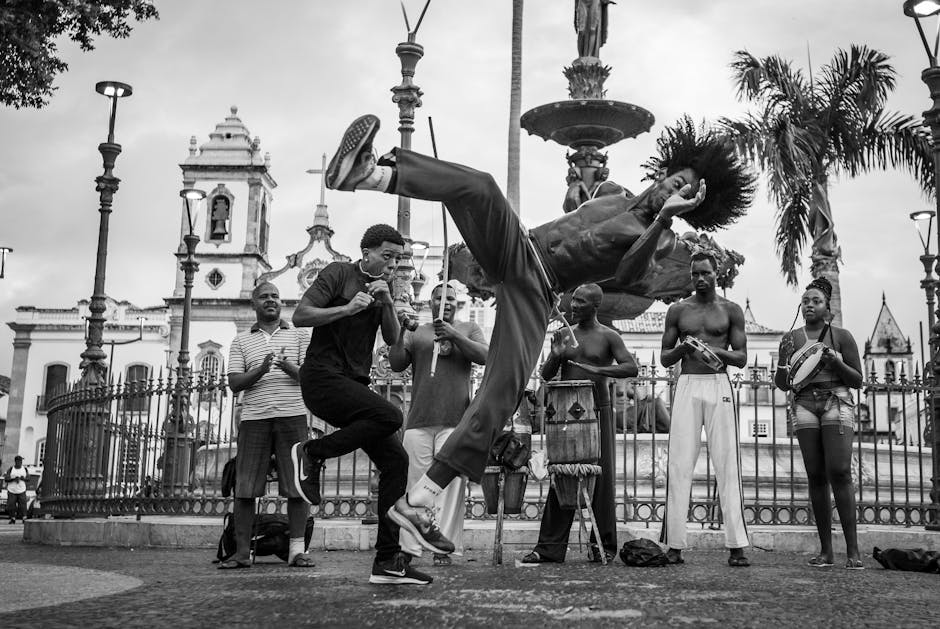- More Than a Game: The Heartbeat of Rio de Janeiro
- The Birth of a Rivalry: A Brotherhood Betrayed
- A Tale of Two Classes: The People vs. The Elite
- Flamengo: O Time do Povo (The People’s Team)
- Fluminense: The Aristocrats and the ‘Rice Powder’
- The Maracanã: A Sacred Stage for a Legendary Duel
- Iconic Matches and Unforgettable Moments
- The ‘Gol de Barriga’ (Belly Goal) of 1995
- The Golden Eras: Zico vs. Rivelino
- Fla-Flu’s Enduring Cultural Impact
- The Modern Derby: A Rivalry Reignited
More Than a Game: The Heartbeat of Rio de Janeiro
Imagine a stadium so vast it feels like a cathedral, trembling with the synchronized roar of nearly 200,000 souls. Picture a city divided, not by walls, but by the vibrant colors of red-and-black and tricolor green, white, and grená. This isn’t just a football match. This is the fla-flu, the legendary derby between Clube de Regatas do Flamengo and Fluminense Football Club. In Rio de Janeiro, this isn’t just a date on the sporting calendar; it’s a cultural phenomenon, a family feud played out on a grass pitch, where history, class, and passion collide for 90 breathtaking minutes.
To understand Rio, you have to understand the Fla-Flu. It’s a rivalry so deeply woven into the city’s fabric that the great Brazilian writer Nelson Rodrigues famously said, “The Fla-Flu began 40 minutes before nothingness.” It’s a poetic way of saying this rivalry feels eternal, like it’s always been here. So, let’s peel back the layers of this iconic clash and discover why it’s one of the most compelling derbies in the world.
The Birth of a Rivalry: A Brotherhood Betrayed
Every great rivalry needs an origin story, and the Fla-Flu’s is a tale of ambition and betrayal. It all started not on the football field, but on the waters of the Guanabara Bay. Back in 1911, Fluminense was a dominant force in Rio’s football scene. However, a dispute within the club’s football department led a group of nine dissatisfied star players to walk out. Their destination? A nearby rowing club that was looking to start its own football team: Flamengo.
Led by a player named Alberto Borgerth, these Fluminense dissidents founded Flamengo’s football department. The stage was set. On July 7, 1912, the very first Fla-Flu took place. It was a classic “master vs. apprentice” or, as many see it, “father vs. son” showdown. The spurned “father,” Fluminense, taught their rebellious “sons” a lesson, winning 3-2. From that very first whistle, a fierce, deeply personal rivalry was born. It wasn’t just about two teams competing; it was about pride, identity, and the bragging rights of an entire city.
A Tale of Two Classes: The People vs. The Elite
What truly cemented the Fla-Flu’s place in Brazilian culture was the stark contrast between the two clubs’ perceived identities. This clash of social classes became the central narrative of the derby for decades.
Flamengo: O Time do Povo (The People’s Team)
Flamengo, with its bold red and black stripes, quickly cultivated an image as the team of the masses. They welcomed players from all backgrounds, breaking down the racial and social barriers that were common in early 20th-century Brazilian football. Their fanbase exploded, drawing support from the working-class neighborhoods, the favelas, and marginalized communities across Rio and, eventually, all of Brazil. Flamengo became more than a club; it became a symbol of popular passion, a force of nature known as the “Nação Rubro-Negra” (The Red-and-Black Nation), now boasting over 40 million supporters worldwide.
Fluminense: The Aristocrats and the ‘Rice Powder’
Fluminense, on the other hand, was founded by the sons of Rio’s elite and maintained an aristocratic image. Their home ground, the historic Estádio das Laranjeiras, was a gathering place for the city’s high society. This reputation gave rise to one of football’s most peculiar and enduring nicknames. In 1914, a Black player named Carlos Alberto, who had previously played for a working-class club, joined Fluminense. To supposedly “fit in” with the club’s white, upper-class environment, a story spread that he would apply rice powder to his skin to appear lighter. Rival fans seized upon this, dubbing Fluminense supporters “Pó de Arroz” (Rice Powder). While the historical accuracy is debated, the nickname stuck, forever cementing Fluminense’s identity as the team of the elite in the rivalry’s folklore.
The Maracanã: A Sacred Stage for a Legendary Duel
You can’t talk about Fla-Flu without talking about its spiritual home: the Estádio do Maracanã. This temple of football has hosted countless legendary encounters between the two sides. The sheer spectacle of a Fla-Flu at a packed Maracanã is a sight to behold, with one half of the stadium a sea of red and black and the other a beautiful mosaic of green, white, and grená.
The pinnacle of this relationship between derby and stadium occurred on December 15, 1963. Flamengo and Fluminense met in the final of the Carioca Championship. The city stood still. A staggering 194,603 spectators crammed into the Maracanã, setting the world record for attendance at a club football match that stands to this day. The match itself was a tense, dramatic affair, ending in a 0-0 draw that handed the title to Flamengo. But the result was almost secondary to the event itself—a moment that proved the Fla-Flu was the biggest club spectacle on the planet.
Iconic Matches and Unforgettable Moments
A rivalry this long is filled with legendary tales passed down through generations. Certain matches have become so iconic they are part of Brazilian football mythology.
The ‘Gol de Barriga’ (Belly Goal) of 1995
Perhaps no single moment defines the beautiful, chaotic, and often cruel nature of the Fla-Flu more than the 1995 Carioca Championship final. Flamengo, celebrating its centenary year, was the heavy favorite. The game was tied 2-2 in the final minutes, a result that would give Flamengo the title. But then, the unthinkable happened. Fluminense forward Renato Gaúcho, a former Flamengo idol, found himself in front of the goal. A shot came in, he fell, and the ball trickled over the line, seemingly off his stomach. The referee gave the goal. Fluminense won 3-2. The “belly goal” gave Fluminense the title and broke millions of Flamengo hearts in their most important year. It was the ultimate act of derby revenge, a moment of pure, unadulterated Fla-Flu drama.
The Golden Eras: Zico vs. Rivelino
The 1970s saw the rivalry elevated by two of Brazil’s all-time greatest players. Flamengo had Zico, the “White Pelé,” a creative genius with an uncanny eye for goal. Fluminense had Rivelino, a World Cup winner with a thunderous left-foot shot and an iconic mustache. The duels between these two legends and their star-studded teams defined an era of beautiful, attacking football and made the Fla-Flu a must-watch event for any fan of the beautiful game.

Fla-Flu’s Enduring Cultural Impact
The rivalry’s influence stretches far beyond the 90 minutes of play. It’s a recurring theme in Brazilian music, cinema, and literature. For Cariocas (residents of Rio), your choice of team is a fundamental part of your identity. Families are divided, friendships are tested, and entire neighborhoods are decorated in club colors on match day.
The pre-game atmosphere, known as the “festa na arquibancada” (the party in the stands), is an art form. Fans spend weeks preparing elaborate choreographies with massive banners, smoke, and flags. The chants are a constant back-and-forth, a clever and often cutting dialogue between the two sets of supporters that fills the stadium with an electric energy. This is where the rivalry truly lives—in the passion of the people who dedicate their hearts to their club.
The Modern Derby: A Rivalry Reignited
In recent years, the Fla-Flu has experienced a powerful resurgence. Once defined by class, the rivalry is now a clash of two of South America’s financial and sporting powerhouses. Both clubs have become consistent contenders for major titles, including the Brasileirão (the national league) and the prestigious Copa Libertadores.
Their frequent meetings in high-stakes finals have added fresh chapters to their historic feud. Adding another layer of complexity, the two clubs are now joint-managers of the Maracanã stadium, forcing a strange ‘frenemy’ dynamic where they must cooperate off the pitch while remaining the fiercest of adversaries on it.
So, while the old narratives of class have faded, the core of the rivalry remains the same. It’s about history. It’s about identity. It’s about the deep-seated, unshakable belief that your colors are superior. Whether you’re cheering for the “People’s Team” or the “Tricolor,” the Fla-Flu remains the ultimate expression of what it means to be a Carioca. It is, and always will be, the beautiful, chaotic, and passionate soul of Rio de Janeiro.





